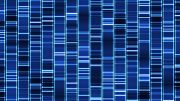
The discovery could open the door to interventions aimed at slowing down or even reversing the aging process.
A previously unknown mechanism that drives aging has been found to be universal across a range of different animals, including humans.
- A new study finds that most molecular-level changes that occur during aging are associated with gene length
- Organisms balance the activity of short and long genes
- Aging is accompanied by a shift in gene activity toward short genes, which are associated with accelerated aging
- Researcher: “Aging is a subtle imbalance, away from equilibrium” that requires your cells to expend more effort to function properly
- Findings could lead to medical interventions that slow or even reverse the biological hallmarks of aging
A groundbreaking study by researchers at Northwestern University has uncovered a previously unknown mechanism that controls aging.
Utilizing artificial intelligence, the team analyzed data from a wide range of tissues from humans, mice, rats, and killifish. They discovered that the length of genes plays a significant role in the molecular changes that occur during aging.
All cells must balance the activity of long and short genes. The researchers found that longer genes are linked to longer lifespans, and shorter genes are linked to shorter lifespans. They also found that aging genes change their activity according to length. More specifically, aging is accompanied by a shift in activity toward short genes. This causes the gene activity in cells to become unbalanced.
Surprisingly, this finding was near universal. The researchers uncovered this pattern across several animals, including humans, and across many tissues (blood, muscle, bone, and organs, including liver, heart, intestines, brain, and lungs) analyzed in the study.
The new finding potentially could lead to interventions designed to slow the pace of — or even reverse — aging. The study was recently published in the journal Nature Aging.
“The changes in the activity of genes are very, very small, and these small changes involve thousands of genes,” said Northwestern’s Thomas Stoeger, who led the study. “We found this change was consistent across different tissues and in different animals. We found it almost everywhere. I find it very elegant that a single, relatively concise principle seems to account for nearly all of the changes in the activity of genes that happen in animals as they age.”
“The imbalance of genes causes aging because cells and organisms work to remain balanced — what physicians denote as homeostasis,” said Northwestern’s Luís A.N. Amaral, a senior author of the study. “Imagine a waiter carrying a big tray. That tray needs to have everything balanced. If the tray is not balanced, then the waiter needs to put in extra effort to fight the imbalance. If the balance in the activity of short and long genes shifts in an organism, the same thing happens. It’s like aging is this subtle imbalance, away from equilibrium. Small changes in genes do not seem like a big deal, but these subtle changes are bearing down on you, requiring more effort.”
An expert in complex systems, Amaral is the Erastus Otis Haven Professor of Chemical and Biological Engineering in Northwestern’s McCormick School of Engineering. Stoeger is a postdoctoral scholar in Amaral’s laboratory.
Looking across ages
To conduct the study, the researchers used various large datasets, including the Genotype-Tissue Expression Project, a National Institutes of Health-funded tissue bank that archives samples from human donors for research purposes.
The research team first analyzed tissue samples from mice — aged 4 months, 9 months, 12 months, 18 months, and 24 months. They noticed the median length of genes shifted between the ages of 4 months and 9 months, a finding that hinted at a process with an early onset. Then, the team analyzed samples from rats, aged 6 months to 24 months, and killifish, aged 5 weeks to 39 weeks.
“There already seems to be something happening early in life, but it becomes more pronounced with age,” Stoeger said. “It seems that, at a young age, our cells are able to counter perturbations that would lead to an imbalance in gene activity. Then, suddenly, our cells are no longer able to counter it.”
After completing this research, the researchers turned their attention to humans. They looked at changes in human genes from ages 30 to 49, 50 to 69 and then 70 and older. Measurable changes in gene activity according to gene length already occurred by the time humans reached middle age.
“The result for humans is very strong because we have more samples for humans than for other animals,” Amaral said. “It was also interesting because all the mice we studied are genetically identical, the same gender, and raised in the same laboratory conditions, but the humans are all different. They all died from different causes and at different ages. We analyzed samples from men and women separately and found the same pattern.”
‘Systems-level’ changes
In all animals, the researchers noticed subtle changes to thousands of different genes across samples. This means that not just a small subset of genes that contribute to aging. Aging, instead, is characterized by systems-level changes.
This view differs from prevailing biological approaches that study the effects of single genes. Since the onset of modern genetics in the early 20th century, many researchers expected to be able to attribute many complex biological phenomena to single genes. And while some diseases, such as hemophilia, do result from single gene mutations, the narrow approach to studying single genes has yet to lead to explanations for the myriad changes that occur in neurodegenerative diseases and aging.
“We have been primarily focusing on a small number of genes, thinking that a few genes would explain the disease,” Amaral said. “So, maybe we were not focused on the right thing before. Now that we have this new understanding, it’s like having a new instrument. It’s like Galileo with a telescope, looking at space. Looking at gene activity through this new lens will enable us to see biological phenomena differently.”
Lengthy insights
After compiling the large datasets, many of which were used in other studies by researchers at Northwestern University Feinberg School of Medicine and in studies outside Northwestern, Stoeger brainstormed an idea to examine genes, based on their length.
The length of a gene is based on the number of nucleotides within it. Each string of nucleotides translates to an amino acid, which then forms a protein. A very long gene, therefore, yields a large protein. And a short gene yields a small protein. According to Stoeger and Amaral, a cell needs to have a balanced number of small and large proteins to achieve homeostasis. Problems occur when that balance gets out of whack.
Although the researchers did find that long genes are associated with increased lifespans, short genes also play important roles in the body. For example, short genes are called upon to help fight off pathogens.
“Some short genes could have a short-term advantage on survival at the expense of ultimate lifespan,” Stoeger said. “Thus, outside of a research laboratory, these short genes might help survival under harsh conditions at the expense of shortening the animal’s ultimate lifespan.”
Suspected ties to long COVID-19
This finding also may help explain why bodies take longer to heal from illnesses as they age. Even with a simple injury like a paper cut, an older person’s skin takes a longer time to recover. Because of the imbalance, cells have fewer reserves to counteract the injury.
“Instead of just dealing with the cut, the body also has to deal with this activity imbalance,” Amaral hypothesized. “It could explain why, over time with aging, we don’t handle environmental challenges as well as when we were younger.”
And because thousands of genes change at the system level, it doesn’t matter where the illness starts. This could potentially explain illnesses like long COVID-19. Although a patient might recover from the initial virus, the body experiences damage elsewhere.
“We know cases where infections — predominantly viral infections — lead to other problems later in life,” Amaral said. “Some viral infections can lead to cancer. Damage moves away from the infected site and affects other areas of our body, which then is less able to fight environmental challenges.”
Hope for medical interventions
The researchers believe their findings could open new venues for the development of therapeutics, designed to reverse or slow aging. Current therapeutics to treat illness, the researchers argue, are merely targeting the symptoms of aging rather than aging itself. Amaral and Stoeger compare it to using Tylenol to reduce a fever instead of treating the illness that caused the fever.
“Fevers can occur for many, many reasons,” Amaral said. “It could be caused by an infection, which requires antibiotics to cure, or caused by appendicitis, which requires surgery. Here, it’s the same thing. The issue is the gene activity imbalance. If you can help correct the imbalance, then you can address the downstream consequences.”
Other Northwestern co-senior authors include Richard Morimoto, a professor of molecular biosciences in the Weinberg College of Arts and Sciences; Dr. Alexander Misharin, an associate professor of medicine at Feinberg; and Dr. G.R. Scott Budinger, the Ernest S. Bazley Professor of Airway Diseases at Feinberg and chief of pulmonary and critical care at Northwestern Medicine.
Reference: “Aging is associated with a systemic length-associated transcriptome imbalance” by Thomas Stoeger, Rogan A. Grant, Alexandra C. McQuattie-Pimentel, Kishore R. Anekalla, Sophia S. Liu, Heliodoro Tejedor-Navarro, Benjamin D. Singer, Hiam Abdala-Valencia, Michael Schwake, Marie-Pier Tetreault, Harris Perlman, William E. Balch, Navdeep S. Chandel, Karen M. Ridge, Jacob I. Sznajder, Richard I. Morimoto, Alexander V. Misharin, G. R. Scott Budinger and Luis A. Nunes Amaral, 9 December 2022, Nature Aging.
DOI: 10.1038/s43587-022-00317-6
The study was funded by the U.S. Department of Defense, the National Institutes of Health, the National Science Foundation, and the Veterans Administration Medical Center.







This “discovery” is not exactly new. It has been known for some time that the length of the telomeres on the ends of our chromosomes is directly related to cell senescence and death, with shorter length connoting old age.
I believe the article says “genes” when the authors mean “chromosomes”. Actually the “shortening” is of the telomeres at the ends of the chromosomes. The telomeres are not genes. To the best of my knowledge, the length of individual genes does not change.
I’m pretty sure the article means genes. Look at the reference study at the bottom and they talk about genes.
Open access! I’m pretty sure those are charts I am very unused-to, but the differentiation there among genes, promoters, miRNA, maybe even telomeres makes it clear it’s general. Go to it and say how you knew ahead though, because that is a big bag o genes (and promoters etc.) and I can’t tell how they’re supposed to be shook so well or why cells would beg off on longer genes with short ones. The computer science analogy too, please.
The study is not about shortening of telomeres, the title of the article specifically says “transcriptome”, i.e. the totality of mRNA (messenger RNAs) in a cell or group of cells. This should have been clarified in the news article, to avoid the above comments about telomeres.
This approach is very good and obviously very difficult,but helps Humans a lot. Mammals, The Flying squirrels are able to glide from one tree to another 300′ with the aid of Furred parachute-like skin membrane that stretches from wrist to ankle called patagium. Their long tails also provide stability as they glide. Other Mammals, Bats also fly like Birds. Why their flying features are not being transferred first to Rodents such as Rats, Mice and Hamsters etc., ? We need not release them into air, but confine them to only labs and zoos.
Geneticists now have that ability to discover genes responsible for flying. Since they are animals, such experiments will be allowed. Wright Brothers flew the very first plane in 1903. May be in another 100 years, we will also be able to fly like all those flying creatures !
Reversing the Age is ESSENTIAL as long as their Brains do not Forget what they have acheived during their lifetime. Science of GENETICS is so Great; We spend millions to billions of dollars for Politics, but not much for Genetics. They must do simple things to prove to comman man, who is the voter – Convincing the Importance of Genetics. Earth has so many kinds of monkeys etc., Earthworms eat soil and still survive (How come?), Where as we have to boil food first etc., ? We already constructed several skyscrapers, Bridges etc., and spent money for several silly non-scientific things too, but never did something that interests common man right away.
45-year-old Biotech CEO (May have) REDUCED His Biological Age by 5 years !
(Not only do we need young bodies, but also need dirt cheap, abundant renewable energy for all factories and vehicles). Genes of others are consumed by “Part Plant – Part Animals” and used. Scientists are struggling to make devices to produce hydrogen from water in air and abundant renewable solar energy. Why not they try to learn more from “Part Plant – Part Animals” such as Sea Slug, Elysia chlorotica and leaf slug, Costasiella kuroshimae with special features and Improve those devices fast?
FOR GGODNESS SAKE
THE CONNECTION TO THESE GUT MICROBESIS – WORMS TO A NONSCIENTIST) .
FROM INFECTED ‘ WOMB LININGS ‘ TO OLD AGE AND DENETIA.
UNDIAGNOSED
AND WROGLY BEING DIAGNOSED AS ALL SORTS OF CONDITUINS AND CANCERS .
THE CDC KNOW ALL ABOUT IT BUT LIE ABOUT NEEDLE INFECTIINS – WHICH YOU DO GET FROM THE APLASTIC ANAEMIA THOUGH .
PASSED OFF AS YEAST INFECTIINS
BUT IT DOES CAUSE INFERTILITY .
GOUT AND PROSTATE AND COLIN PROBLEMS
WHEN IT’S IMPOSSIBLY UNDIAGNOSED IN THE SMALL INTESTINE
AND VERY VERY DANGEROUS IN THE HEAD –
WHERE IT IS VERY VERY VERY INFECTIOUS IN SALIVA OR MUCOUS.
WHEN AM I GOING TO GEAR ABOUT THIS IN THE NEWS !!!!!!!!!!
INSTEAD OF GUT MICROBES AND BREAKTHROUGHS WITH DEMENTIA.
YES
IT’S….ING
WORMS
SPIALLUNG MUSCLE TWISTINVG CONSUMPTIIN CAUSING
VERY PAINFUL SOUL DESTROYING
PARASITIC WORMS
STOO CIMOKUCATING IT AS MEDICAL JARGIN.
OLD FASHUONEX
BUT CRIMANALLY NEGLIGENTLY
LING FORGOTTEN ABOUT
PARASITIC DISEASE SPREADING WORMS
THAT THE GOVERNMENT’S KNOW
ALL ABOUT .
SPIT IT OUT AND GET IT IN THE NEWS .
IT’S NOT ONLY ELDERLY SUFFERING DEMENTIA
IT’S OUR CHIKDREN
HAVE BEEN FOR A LING TUME.
THESE PARASITES
CAUSE WHAT YOU CALL
BEHAVIOURAL DISORDERS .
YES BEVAUSE OF INTESTINAL AND BODY DISMORPIC, WITH EATING DISORDERS DEPRESSIIN AGGRESSIIN FITTING AND SUICIDAL TWNDWNCIES .
AS IT MAKES YOU WANT TO DROWN YOURSELF.
AS IT’S INTENDED IN ROTTEN FOOD OR FAECES.
NOT INSIDE A BODY .
UNLESS YOU’RE A COW WITH 3 STIMACHS AND STINKING FAEVES WITH IT IN